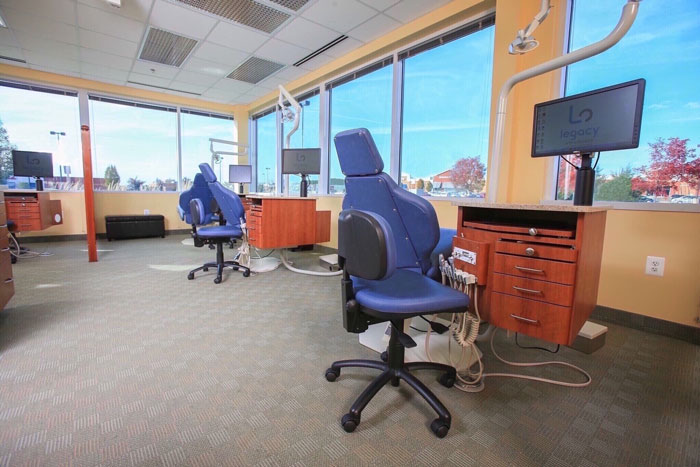The 3-Minute Rule for Legacy Orthodontics
The 3-Minute Rule for Legacy Orthodontics
Blog Article
All about Legacy Orthodontics
Table of ContentsGetting The Legacy Orthodontics To WorkLegacy Orthodontics Things To Know Before You BuyThe Best Strategy To Use For Legacy OrthodonticsThe Definitive Guide to Legacy OrthodonticsSome Ideas on Legacy Orthodontics You Should Know
At Advanced Orthodontics, we give clients with a all natural treatment experience. In addition, we provide flexible treatment schedules, versatile payment options and an enjoyable, enjoyable experience. leesburg orthodontics. Phone call ( 480) 357-4900 today for additional information and routine a visit.An orthodontist is a dental professional educated to detect, avoid, and treat teeth and jaw irregularities. They fix existing problems and are trained to determine troubles that might establish in the future. Orthodontists work with people of all ages, from children to adults. People commonly associate an ideal smile with good health.
Malocclusion, or misaligned teeth, can result in dental concerns, including dental cavity, gum tissue disease, and hard or agonizing chewing. Not every person is born with straight teeth. If you have a poor bite or huge rooms in between your teeth, you may intend to consult a dental practitioner focusing on orthodontic treatment.
The 30-Second Trick For Legacy Orthodontics
( Image Credit History: DigitalVision/Getty Images) Orthodontists make use of repaired and detachable dental tools, like braces, retainers, and bands, to transform the placement of teeth in your mouth. Orthodontic therapy is for oral irregularities, consisting of: Uneven teethBite troubles, like an overbite or an underbiteCrowded teeth or teeth that are also much apartJaw misalignmentThe goal of orthodontic treatment is to enhance your bite.
A healthy bite guarantees you can eat, chew, and speak appropriately. While you may think about orthodontists as primarily for youngsters or young adults who need braces, they can correct oral problems at any kind of age. Orthodontists attend college, dental school, and orthodontic school. After college graduation, they spend 2 or 3 years in an orthodontic residency program.
All orthodontists are dental professionals, but not all dental professionals are orthodontists. Orthodontic residency programs offer intensive, concentrated direction for oral specialists. They concentrate on two locations: Just how to properly and securely move teeth How to correctly direct growth in the teeth, jaw, and faceOnce an orthodontist has actually finished training, they have the alternative to become board licensed.
All about Legacy Orthodontics
Imbalance, or malocclusion, is the most typical reason individuals see an orthodontist. It is genetic and is the result of size differences in between the top and lower jaw or in between the jaw and teeth. Malocclusion leads to tooth congestion, a twisted jaw, or irregular bite patterns. Malocclusion is normally treated with: Your orthodontist attaches metal, ceramic, or plastic square bonds to your teeth.
Some individuals need a headgear to help relocate teeth right into have a peek at this site line with stress from outside the mouth. A retainer is a personalized device that keeps your teeth in location.
They can create additional area in the mouth without having to pull teeth. Orthodontists use cables, surgical screws, or plates to support your jaw bone.
You may need to see an orthodontist if you have: Crowding or not sufficient area for every one of your teethOverbite, when your top teeth come your bottom teethUnderbite, when your bottom teeth are too far forwardSpacing or issues with gapsCrossbite, which is when your top teeth fit behind your base teeth when your mouth is closedOpen bite or an upright space between your front bottom and top teethMisplaced midline, when the facility of your bottom and upper teeth do not line up Remedying a dental malocclusion can: Make attacking, eating, and speaking easierImprove the symmetry of our face and your total appearanceEase discomfort from temporomandibular joint conditionsSeparate your teeth and make them easier to cleanse, helping avoid tooth decay or tooth cavities It's usually a dental expert who first notifications misaligned teeth throughout a routine exam.
The Main Principles Of Legacy Orthodontics

Throughout your initial orthodontic assessment, you'll likely have: An oral examPhotos taken of your face and smileDental X-raysPanoramic (360 level) X-rays of your face and headImpressions to produce mold and mildews of your teethThese examinations will certainly help your orthodontist recognize how to wage your treatment. leesburg braces. An orthodontist is a dental expert who's had training to treat your teeth and jaw
An orthodontist is concentrated on your bite, so something like a chipped tooth would be dealt with by a dental expert. Orthodontists are focused on your bite, or the method your teeth fit together, and the straightness of your teeth.
Ever before asked yourself how celebrities always seem to have completely straightened teeth? Orthodontists are oral professionals that focus on remedying abnormalities in the teeth and jaws.
Get This Report about Legacy Orthodontics

, orthodontists have a varied toolkit at their disposal. These reliable braces make use of a system of braces adhered to the teeth and attached by cables.
Clear aligners, like Invisalign, are a popular option for individuals seeking an extra discreet therapy alternative. These detachable trays are customized to considerably change the teeth's placement. Headgear may be utilized in conjunction with dental braces or aligners to use extra targeted pressures, specifically for fixing jaw discrepancies. In situations of narrow jaws, palatal expanders can be utilized to develop space for correct tooth placement.
Report this page